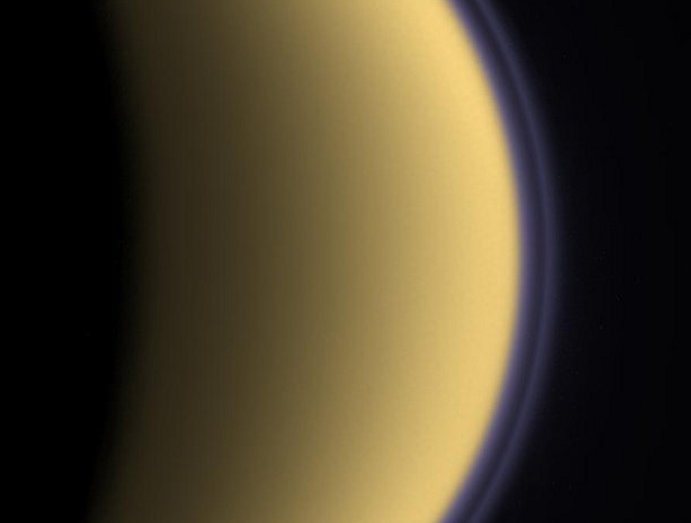MessageToEagle.com – A new study suggests that one key to Titan’s mysterious atmosphere is the “cooking” of organic material in the moon’s interior.
One of the greatest mysteries about Titan, one of Saturn’s moons: the origin of its thick, nitrogen-rich atmosphere.
“Titan is a very interesting moon because it has this very thick atmosphere, which makes it unique among moons in our solar system,” Dr. Kelly Miller, research scientist in Southwest Research Institute’ s Space Science and Engineering Division and lead author of the study, said in a press release.

“It is also the only body in the solar system, other than Earth, that has large quantities of liquid on the surface. Titan, however, has liquid hydrocarbons instead of water. A lot of organic chemistry is no doubt happening on Titan, so it’s an undeniable source of curiosity.”
The atmosphere of Saturn’s largest moon is extremely dense, even thicker than Earth’s atmosphere, and is comprised mainly of nitrogen gas.
“Because Titan is the only moon in our solar system with a substantial atmosphere, scientists have wondered for a long time what its source was,” she said. “The main theory has been that ammonia ice from comets was converted, by impacts or photochemistry, into nitrogen to form Titan’s atmosphere. While that may still be an important process, it neglects the effects of what we now know is a very substantial portion of comets: complex organic material.”
Another odd aspect of Titan’s atmosphere is that it’s also about 5 percent methane, which reacts quickly (by astrophysical standards) to form organics that gradually fall to the surface. As a result, the atmospheric methane would either have to be replenished somehow or this current period of time is simply a unique era for Titan.
Miller’s investigation was spurred by data from the Rosetta spacecraft, a European Space Agency probe that studied the distant comet 67P/Churyumov-Gerasimenko with NASA participation and delivered the surprising discovery that the comet was roughly half ice, a quarter rock and a quarter organic material.
“Comets and primitive bodies in the outer solar system are really interesting because they’re thought to be leftover building blocks of the solar system,” she said. “Those small bodies could be incorporated into larger bodies, like Titan, and the dense, organic-rich rocky material could be found in its core.”
To study the Titan mystery, Miller combined existing data from organic material found in meteorites with previous thermal models of the moon’s interior to see how much gaseous material could be produced and whether it was comparable to the atmosphere now. Following the standard rule of, “If you cook something, it will produce gases,” Miller found that approximately half of the nitrogen atmosphere, and potentially all of the methane, could result from the “cooking” of these organics that were incorporated into Titan at its very beginning.
MessageToEagle.com






